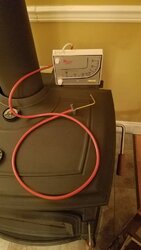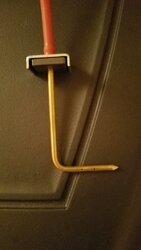Woody Stover
Minister of Fire
I guess you're not a PETA member, then?Many of us have heated our houses just fine with bobcats for years.

You seem to have a large circle of friends that burn wood. When you say that BK owners you talked to have "stalled" their stoves and had creo smell, does this happen when they run their stoves on a low cat burn with no flame in the box, or when they actually stall the cat and the probe falls out of the active zone?Any other cat stove will likely have the same draft issues....I'm certainly not the only person that has had creo problems with a BK. Many people I've talked to have stalled their BK at least once or twice a season and have gotten creo smell. If I had known there would be a risk of this I would have done things completely different. At a minimum I'd would have done the chimney completely different. Now I'm stuck trying to deal with what I have.
If there is a better drafting and better sealed cat stove I would certainly take a look but I have only seen worse stories with other stoves.
What are the "worse stories" you have heard from people that have other brands of cat stoves? From what I've read here, the BKs are the only cat stoves that are very picky about draft...mostly the Ashford.
Yeah, you are going to lay out more money any way you go, new chimney or new stove. If you can use your Class A from outside, you only have to pay for the install, which shouldn't be too bad. Maybe less than the 2.5K+ you'd pay for a good quality stove, minus what you could get for the BK. I think a better chimney (inside the house with less turns) would probably get rid of the smoke to a large degree, and getting your draft measurements might support this theory. You may still have a little odor with the Ashford but people seem to put up with it.
BTW, no 45 elbows once you get above the ceiling support box into the Class A.



